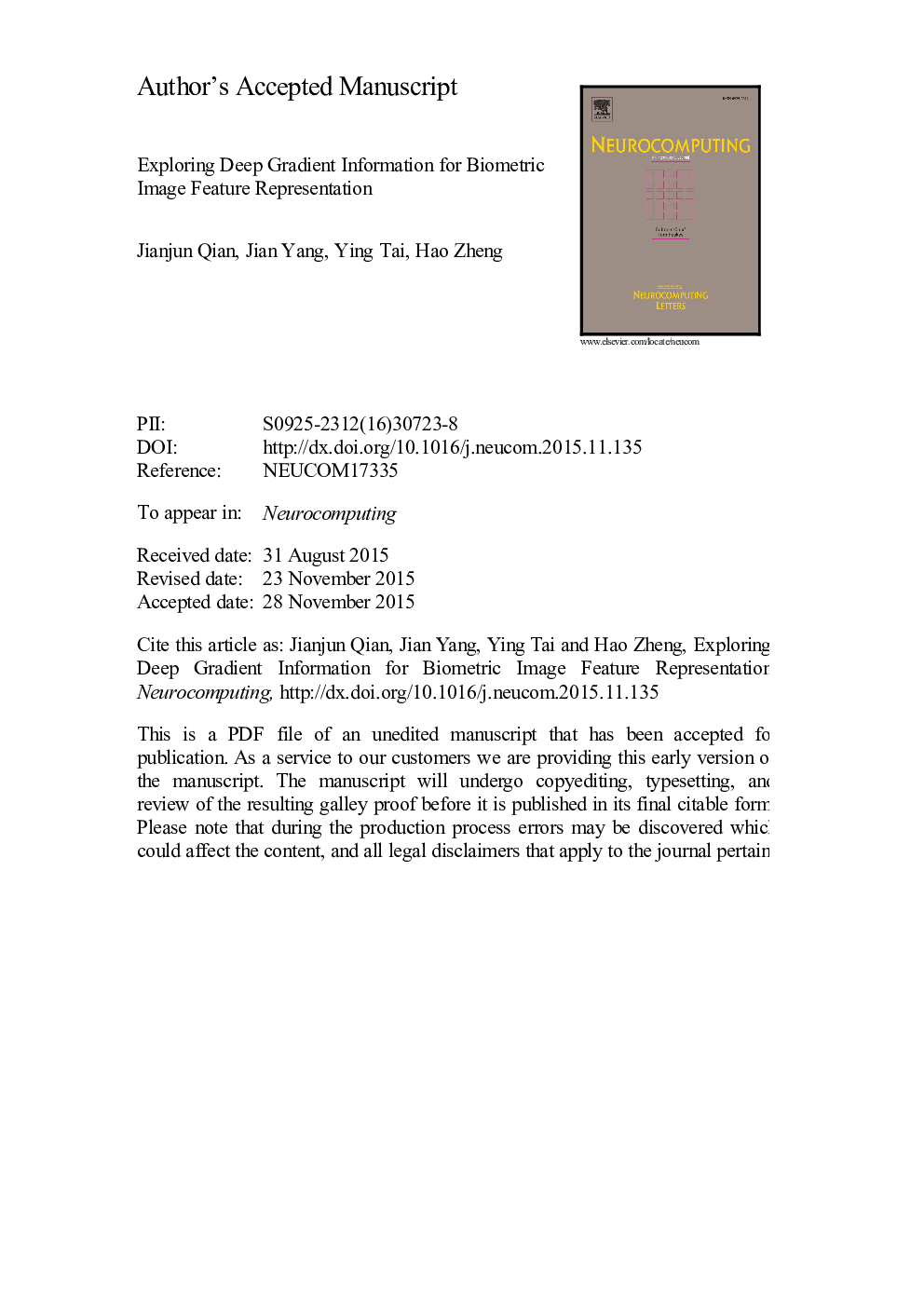| Article ID | Journal | Published Year | Pages | File Type |
|---|---|---|---|---|
| 4948308 | Neurocomputing | 2016 | 26 Pages |
Abstract
This paper presents a novel but simple biometric image feature representation method, called exploring deep gradient information (DGI). DGI first captures the local structure of an image by computing the histogram of gradient orientation of each macro-pixel (local patch around the reference pixel). Thus, one image can be decomposed into L sub-images (sub-orientation images) according to the gradient information of each macro-pixel since there are L bins in the local histogram. To enrich the gradient information, we also consider the gradient orientation and magnitude of original image as sub-images. For each sub-image, histogram of oriented gradient (HOG) is used to further explore the gradient orientation information. All HOG features are concatenated into one augmented super-vector. Finally, fisher linear discriminate analysis (FLDA) is applied to obtain the low-dimensional and discriminative feature vector. We evaluated the proposed method on the real-world face image datasets NUST-RWFR, Pubfig and LFW, the PolyU Finger-Knuckle-Print database and the PolyU Palmprint database. Experimental results clearly demonstrate the effectiveness of the proposed DGI compared with state-of-the-art algorithms, e.g., SIFT, HOG, LBP, POEM, LARK and IDLS.
Related Topics
Physical Sciences and Engineering
Computer Science
Artificial Intelligence
Authors
Jianjun Qian, Jian Yang, Ying Tai, Hao Zheng,
